Important Disclaimer: I am not a doctor or medical professional. This is simply a traditional family remedy that my family has always made, passed down through generations. We drink this for dry throat, sore throat, and when we’ve eaten too many snacks or fried foods to help balance the body back. This is not medical advice, and if you have serious health concerns, please consult with a qualified healthcare provider.
There are certain remedies that just become part of your family’s culture. In my house growing up, whenever someone had a scratchy throat, or we’d been snacking on too many chips and fried foods, or the air was particularly dry, someone would inevitably say: “Time to make the herbal drink.”
This wasn’t store-bought cough syrup or throat lozenges. This was a big pot of dark, slightly sweet herbal tea made with Prunella Vulgaris (known as “xia ku cao” or self-heal), chrysanthemum flowers, dried monk fruit, and rock sugar. It’s been our family’s go-to for as long as I can remember, and it’s something I still make regularly for myself now.
I want to share this traditional recipe with you—not as a cure-all or medical treatment, but as a simple herbal drink that my family has always turned to for comfort and balance. It’s cooling, soothing, and has this earthy, slightly sweet taste that just feels restorative.
Let me walk you through exactly how to make it.
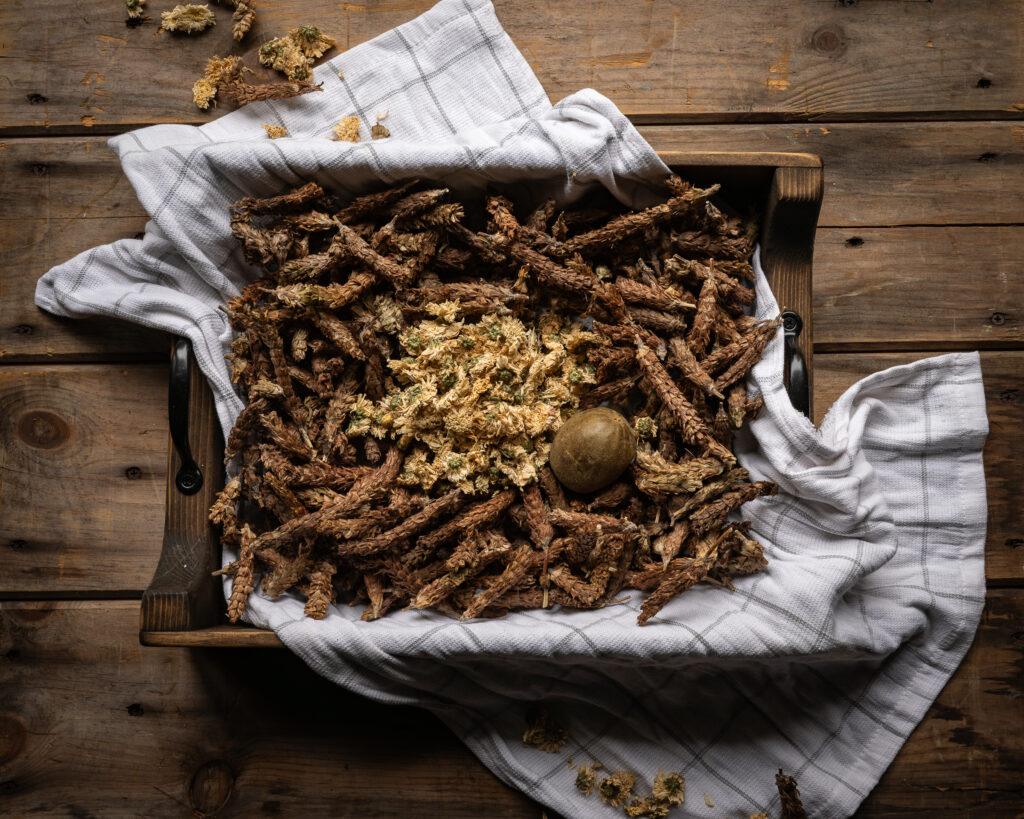
The Four Simple Ingredients
This recipe uses only four ingredients, all of which you can find at any Asian grocery store or herbal shop:
- Prunella Vulgaris (Xia Ku Cao/Self-Heal): The main herb in this recipe. Amount depends on how much you’re making—we’ll get into this.
- Chrysanthemum flowers: A handful, regardless of pot size
- 1 piece of Dried Luo Han Guo (Monk Fruit): Also called Buddha fruit
- Rock sugar: Optional, to taste
That’s it. Four ingredients that come together to make a drink my family has relied on for generations.
What These Ingredients Are
Prunella Vulgaris is a medicinal herb used extensively in traditional Chinese medicine. It looks like dried brownish flower spikes when you buy it. In Chinese, it’s called “xia ku cao” (夏枯草), which literally translates to “summer dry herb.” My family has always used it for throat issues and when we feel like we’ve been eating too much heaty food.
Chrysanthemum flowers you might already be familiar with if you’ve read my other tea recipes. These dried yellow or white flowers add a gentle, floral note and are considered cooling in traditional Chinese medicine.
Luo Han Guo (Monk Fruit) is a round, dried fruit about the size of a tennis ball. It looks almost like a brown, papery sphere. When you crack it open, there are seeds inside and the flesh has dried to a dark brown color. It’s naturally very sweet and is often used as a natural sweetener in Chinese herbal drinks. It’s also traditionally used for soothing throats and coughs.
Rock sugar is those amber-colored crystal chunks you see in Asian grocery stores. It dissolves slowly and adds a clean sweetness that doesn’t overpower the herbal flavors.
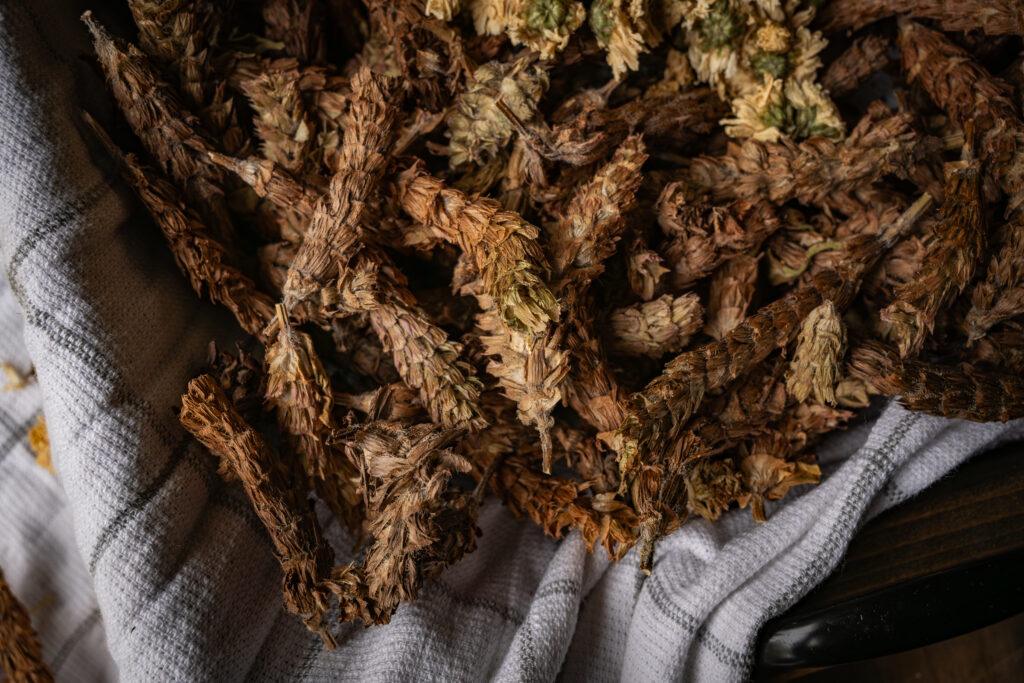
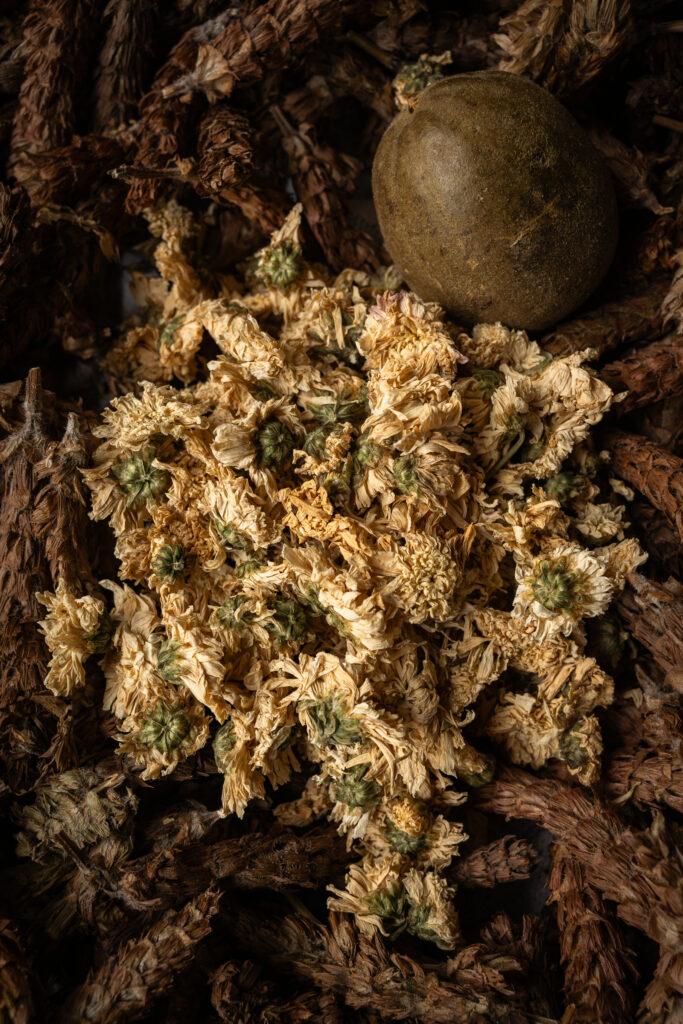
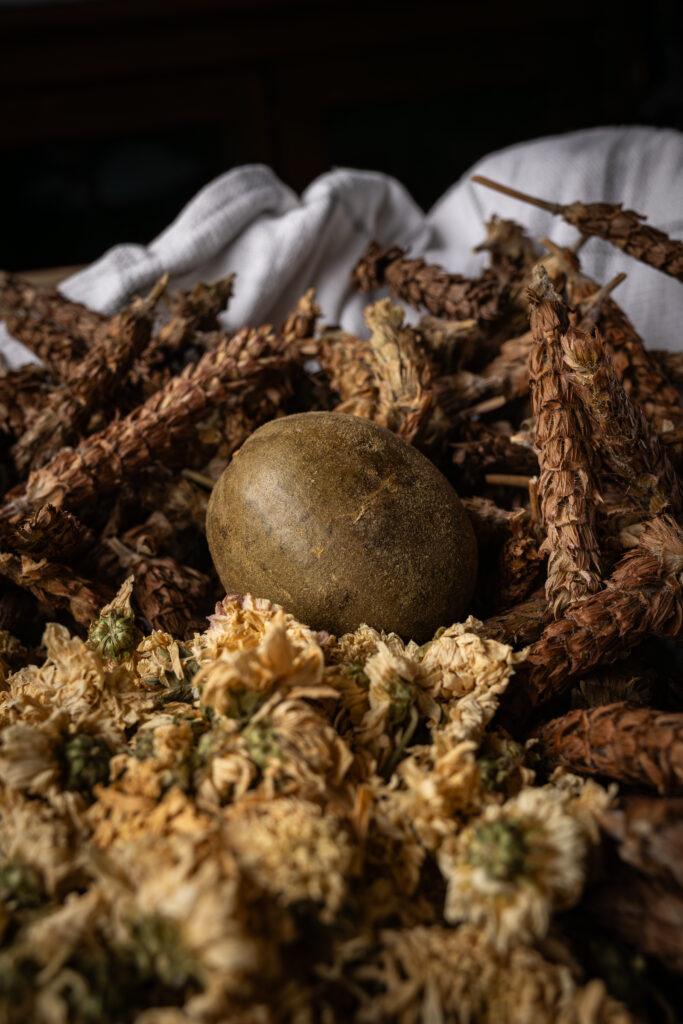
Understanding the Amounts: It’s All About Your Pot
Here’s the thing about this recipe—it’s not precise in the Western cooking sense. My family never measured with cups or grams. It was always about the pot you’re using and visual estimation.
The basic principle:
- Choose whatever size pot you want to use
- Fill it about 3/4 full with Prunella Vulgaris
- Add a handful of chrysanthemum flowers
- Add 1 piece of monk fruit (regardless of pot size)
- Add rock sugar to taste at the end
So if you’re using a small 2-quart pot, fill it 3/4 full with the Prunella Vulgaris. If you’re using a large 6-quart pot, fill that 3/4 full. The proportion stays the same; you’re just scaling up or down based on how much you want to make.
I usually use a medium-sized pot (about 4 quarts) because I like to make enough to drink over 2-3 days. But you can make as much or as little as you need.
Step-by-Step: How to Make the Herbal Drink
Step 1: Rinse Your Herbs
Just like with any dried herbs or flowers, give them a quick rinse. Place your Prunella Vulgaris in a colander and run cool water over it for a few seconds. Do the same with the chrysanthemum flowers. This removes any dust from the drying and packaging process.
The monk fruit and rock sugar don’t need rinsing.
Step 2: Fill Your Pot with Prunella Vulgaris
Choose your pot—whatever size you want to make. Take your dried Prunella Vulgaris and fill the pot about 3/4 full with it. Don’t pack it down tightly; just fill it loosely. This herb will shrink down significantly once it gets wet, so don’t worry about it looking like too much.
Add water to cover the herbs completely, plus about 2-3 inches above. You want plenty of water because this is going to simmer for a while and some will evaporate.
Step 3: Add Chrysanthemum Flowers
Take a handful of dried chrysanthemum flowers and toss them into the pot with the Prunella Vulgaris. By “handful,” I mean literally grab a small handful from your bag of dried flowers—about what you can loosely hold in one cupped hand. This isn’t scientific, and that’s okay. The chrysanthemum adds a subtle floral note and additional cooling properties.
Step 4: Bring to a Boil
Place your pot on the stove over medium-high heat and bring everything to a boil. This usually takes about 10-15 minutes depending on your pot size and how much water you used.
You’ll see the water start to change color as it heats up, gradually turning darker and more amber-colored as the herbs release their properties into the water.
Step 5: Crack and Add the Monk Fruit
This is an important step: take your dried Luo Han Guo (monk fruit) and crack it open before adding it to the pot. Don’t try to break it into tiny pieces or remove the seeds—just crack it enough that it breaks into a few larger pieces. You can do this by placing it on a cutting board and pressing down with the heel of your hand, or gently whacking it with the back of a knife or a small hammer.
Why crack it? Breaking it open allows the sweet, medicinal properties inside to infuse into the water much more effectively than if you threw in the whole fruit.
Once your pot has come to a boil, reduce the heat to low and add the cracked monk fruit pieces directly into the simmering liquid, seeds and all.
Step 6: Simmer Low and Slow
Now comes the patience part. Reduce your heat to low—you want a gentle simmer, not a rolling boil. Let this simmer for at least 45 minutes to 1 hour.
During this time, the liquid will continue to darken. It will reduce slightly as some water evaporates. The kitchen will fill with this earthy, slightly sweet herbal aroma that means comfort to me—it smells like someone taking care of you.
You can simmer it for longer if you want a stronger brew. My family sometimes lets it go for up to 1.5 hours if we want it really concentrated. You’ll know it’s ready when the liquid is a deep amber to dark brown color and tastes earthy and slightly sweet even before adding sugar.
Step 7: Add Rock Sugar (Optional)
Once your herbal drink has simmered to your liking, it’s time to add sweetness if you want it. The monk fruit already adds natural sweetness, so taste your brew first before adding any rock sugar.
If you want it sweeter, add 1-2 pieces of rock sugar (the small chunks, about the size of your thumbnail) and stir until dissolved. You can always add more, but you can’t take it away, so start with less.
Some people in my family drink this with no added sugar at all. Others like it fairly sweet. It’s completely personal preference.
Step 8: Strain and Serve
Turn off the heat and let the pot sit for about 10 minutes to cool slightly. Then strain the liquid through a fine-mesh strainer into a large container or pitcher. Discard all the solids—the herbs, flowers, and monk fruit pieces have done their job.
You now have a pot full of dark, aromatic herbal drink ready to drink.
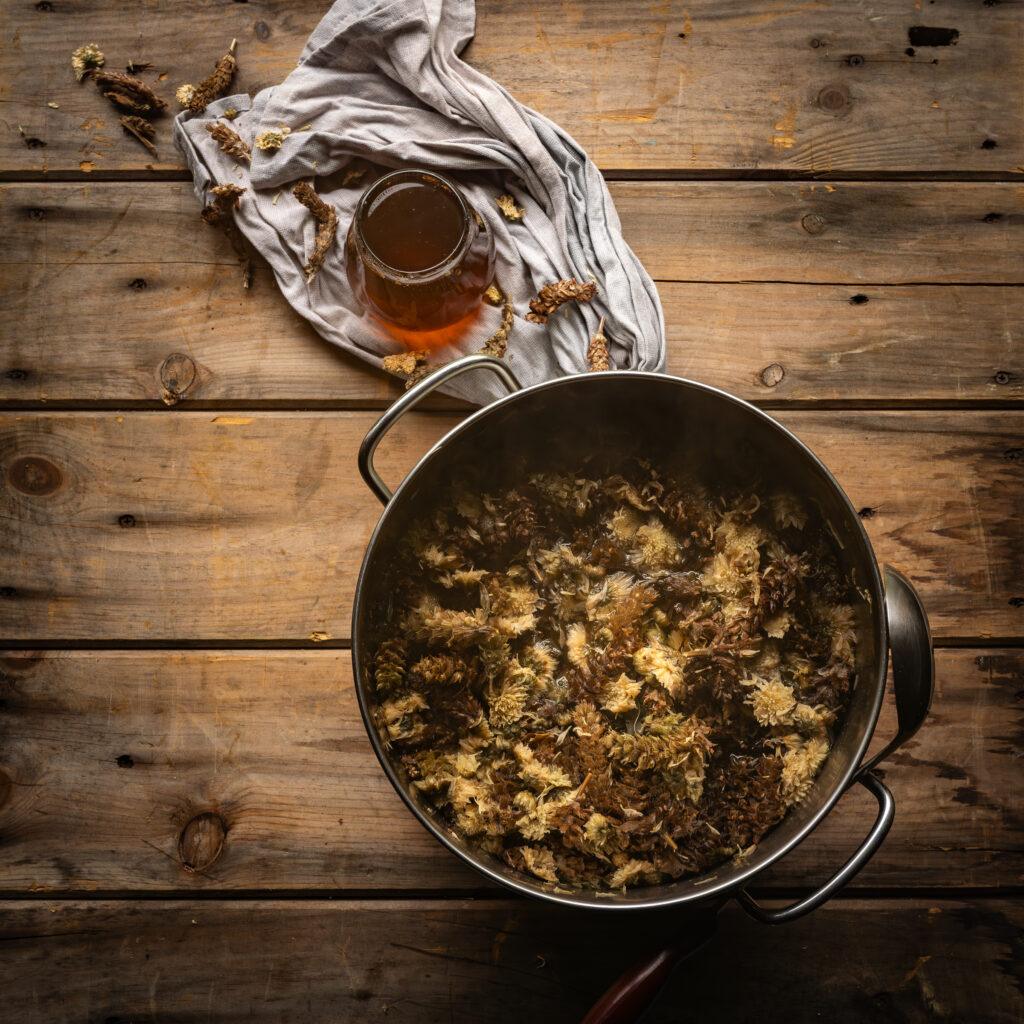
How We Drink It in My Family
This herbal drink is incredibly versatile in terms of serving temperature:
Hot: Pour it into a mug while it’s still warm. This is how we drink it most often when someone has a sore throat or it’s cold outside. The warmth is soothing and comforting.
Warm/Room Temperature: Let it cool to room temperature naturally. It’s still pleasant at this temperature and easier to drink larger quantities.
Cold: My personal favorite, especially in summer or after eating too much fried food. Once the drink has cooled completely, refrigerate it. Serve it cold over ice. It’s incredibly refreshing this way and feels like it’s helping your body “reset.”
We usually make a big pot and keep it in the fridge, drinking it over the course of 2-3 days. It keeps well refrigerated for up to 5 days, though the flavor is best within the first 3 days.
When My Family Makes This
Let me be very clear again: I am not a doctor. I cannot make medical claims about this drink. What I can tell you is when and why my family has traditionally made this herbal drink:
Dry throat: When the air is dry or we’ve been talking a lot and our throats feel scratchy and parched, someone makes a pot of this. The cooling, moistening properties seem to help soothe that dryness.
Sore throat: At the first sign of throat discomfort—not necessarily sick, just that uncomfortable feeling—we make this. It’s soothing to sip on throughout the day.
After eating too many snacks or fried foods: This is a big one in my family. After a day of eating chips, fried chicken, or other “heaty” foods (as we call them), we make this drink to help balance things out. In traditional Chinese medicine, certain foods are considered heating to the body, and this cooling herbal drink is meant to counteract that.
Hot, dry weather: During particularly hot and dry periods, especially summer, my family makes this preventatively. It’s considered cooling and hydrating.
General wellness: Sometimes we just make it because it’s been a while and we feel like our bodies could use it. It’s become a comfort drink as much as anything else.
Again, this is family tradition and cultural practice, not medical advice. If you have actual medical concerns, please see a healthcare provider.
What It Tastes Like
People always ask me what this tastes like, and it’s genuinely hard to describe if you’ve never had Chinese herbal drinks before.
It’s earthy—that’s the dominant note from the Prunella Vulgaris. There’s a subtle floral quality from the chrysanthemum. The monk fruit adds a natural sweetness that’s different from sugar; it’s sweeter but also has a slight fruity depth to it. If you add rock sugar, it becomes more overtly sweet but still maintains that herbal, earthy base.
It’s not delicious in the way a fruit smoothie is delicious. It’s more like… medicinal but pleasant? Comforting in a way that’s hard to explain? It tastes like something that’s good for you, but not in an unpleasant way.
The first time you try it, you might think it’s a bit odd. By the third or fourth time, you’ll start craving it when you’re not feeling quite right. That’s how it works.
Making Large Batches for the Week
In my family, we typically make large batches that last several days. Here’s my usual approach:
I use a large 6-quart pot. I fill it about 3/4 full with Prunella Vulgaris (which is quite a lot—maybe 3-4 cups of the dried herb, loosely measured). I add a generous handful of chrysanthemum flowers. I crack one large monk fruit and add it. Fill with water to about 2 inches from the top.
Bring to a boil, reduce to a simmer, and let it go for a full hour. Add 3-4 pieces of rock sugar. Strain into a large glass pitcher or multiple containers. Refrigerate.
This gives me enough to drink a glass or two per day for about 3-4 days. It’s become part of my weekly routine, especially during dry seasons or when I’ve been eating poorly.
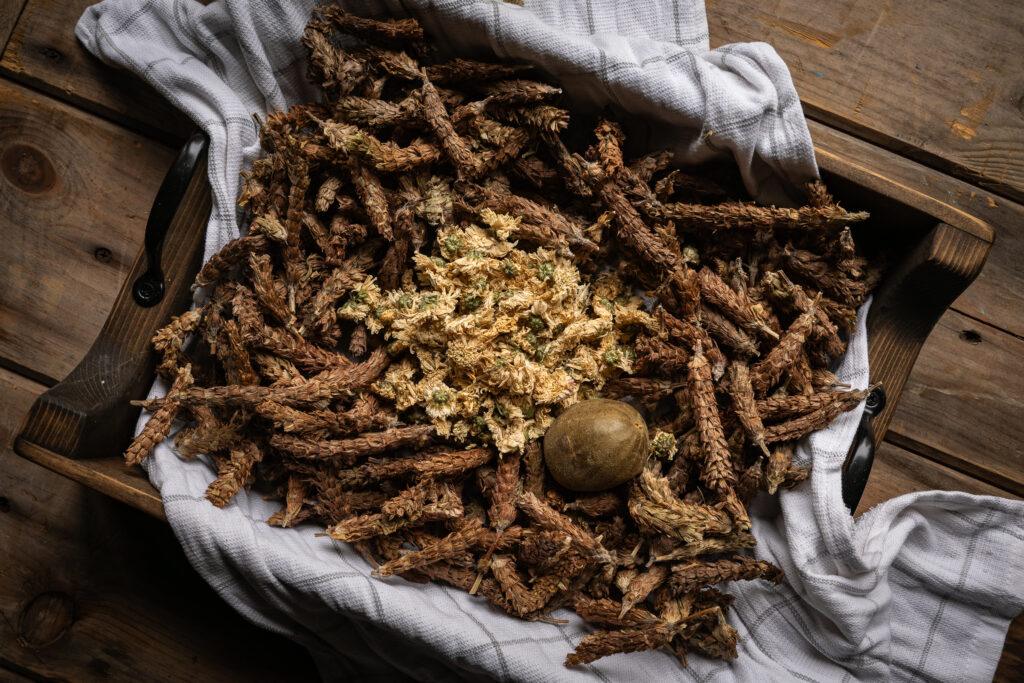
Storage and Reheating
Storage: Once strained and cooled, store the herbal drink in a covered container or pitcher in the refrigerator. It will keep for up to 5 days, though it’s best consumed within 3-4 days.
Reheating: If you want to drink it hot, just pour the amount you want into a mug and microwave for 1-2 minutes, or heat it gently in a small pot on the stove. Don’t boil it again—just warm it up.
Serving cold: Just pour over ice or drink straight from the fridge. No preparation needed.
Where to Find These Ingredients
All four ingredients are readily available at Asian grocery stores, particularly ones that have a Chinese herbal or medicinal section. They’re also available from online retailers that specialize in Chinese herbs and teas.
Prunella Vulgaris is usually in the dried herbs section, often in plastic packages. It’s not expensive—a bag that will make multiple pots usually costs $3-6.
Chrysanthemum flowers are everywhere in Asian groceries, usually in the tea section.
Luo Han Guo (Monk Fruit) is typically sold individually or in small packages. One fruit costs about $2-4 and you only need one per pot, regardless of size.
Rock sugar is in the sugar/sweetener section.
The total cost for making a large pot is usually under $5, and you’ll have leftover ingredients for multiple batches.
Variations (Though We Rarely Change It)
My family’s recipe is pretty standard, but I’ve seen slight variations:
Stronger brew: Use more Prunella Vulgaris or simmer longer for a more concentrated drink.
Lighter brew: Use less Prunella Vulgaris or simmer for a shorter time if you find the flavor too strong.
More or less sweet: Adjust the rock sugar to your preference, or skip it entirely if you find the monk fruit provides enough sweetness.
Add licorice root: Some people add a few pieces of dried licorice root for additional sweetness and throat-soothing properties. My family doesn’t do this, but it’s a common variation.
Honestly, though, we make it the same way every time. When something works, why mess with it?
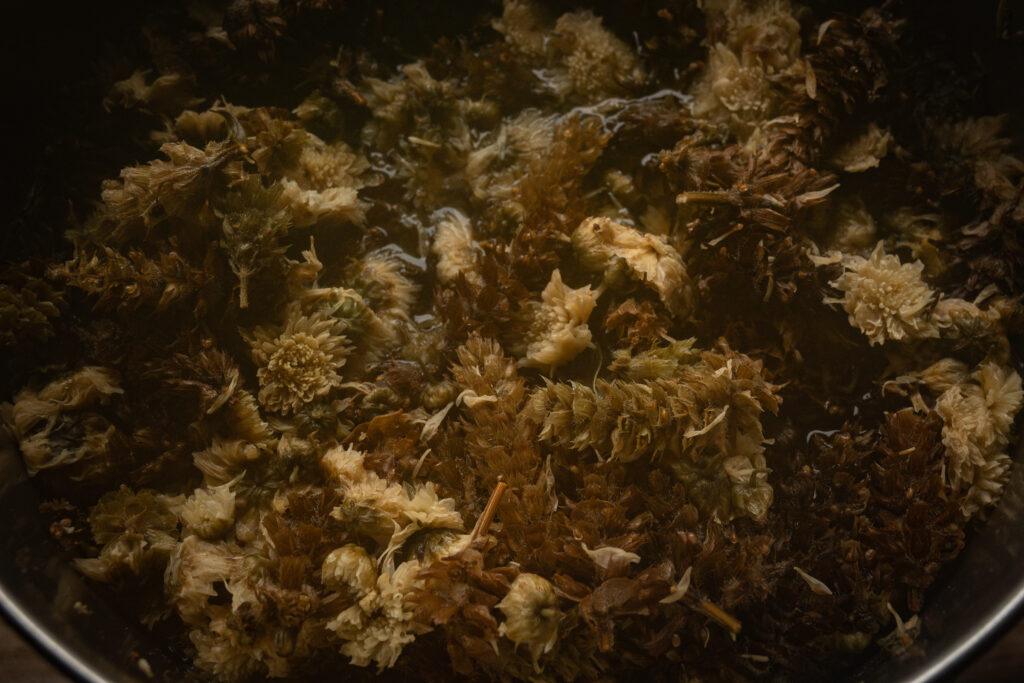
Important Reminders and Cautions
I need to stress this again: I am not a medical professional, doctor, or healthcare provider. This recipe is shared as a traditional family remedy only.
This is not medical treatment. If you have a serious sore throat, persistent cough, or any medical condition, please consult with a qualified healthcare provider. This drink is something my family makes for minor discomforts and general wellness, not for treating medical conditions.
Herb interactions: If you’re taking any medications or have any health conditions, please check with your doctor before consuming herbal drinks. Even natural herbs can interact with medications or conditions.
Pregnancy and nursing: If you’re pregnant or nursing, consult your healthcare provider before trying this or any herbal drink.
Allergies: If you have allergies to any of these plants or ingredients, obviously don’t use them.
Start small: If you’ve never had these herbs before, try a small amount first to make sure you don’t have any adverse reactions.
This drink has been part of my family’s tradition for generations, but that doesn’t mean it’s right for everyone. Use your common sense and listen to your body.
Why This Matters to Me
In a world of quick fixes and over-the-counter medications for every little discomfort, there’s something grounding about making a pot of herbal drink the way my family has always done it. It’s not about replacing modern medicine—it’s about having traditional remedies that connect me to my culture and family history.
When I make this drink, I think about my grandmother making it for my mother, my mother making it for me, and how I’ll probably make it for my own kids someday. It’s more than just a recipe; it’s a tradition of taking care of each other with what we have, using knowledge passed down through generations.
Does it “work”? Well, my throat always feels better after drinking it, whether that’s the herbs or just the comfort of doing something my family has always done. When I’ve been eating junk food for days and feel off-balance, drinking this does seem to help me reset. Is that physiological or psychological? I honestly don’t know, and I’m not sure it matters.
What I know is that this drink has been a constant in my family for as long as anyone can remember. It’s what we turn to when we need a little extra care. And that’s worth something, even if I can’t quantify exactly what.

The Bottom Line
This Prunella Vulgaris herbal drink is simple to make, uses only four ingredients, and has been part of my family’s wellness routine for generations. It’s what we drink for dry throat, sore throat, and when we need to balance out our bodies after eating too much fried or snack food.
Remember: Fill your pot 3/4 full with Prunella Vulgaris, add a handful of chrysanthemum flowers, bring to a boil, crack and add one monk fruit, simmer for 45-60 minutes, add rock sugar to taste if desired, strain, and enjoy hot or cold.
I’m sharing this not as a medical professional (because I’m not one), but as someone passing along a family tradition. Try it if you’re curious about traditional Chinese herbal remedies. But please, please consult with healthcare professionals for any actual medical concerns.
This drink won’t cure everything, but it might just become your new comfort beverage when you’re not feeling quite right. And sometimes, that’s exactly what you need.
Happy Brewing!
<3 Ann

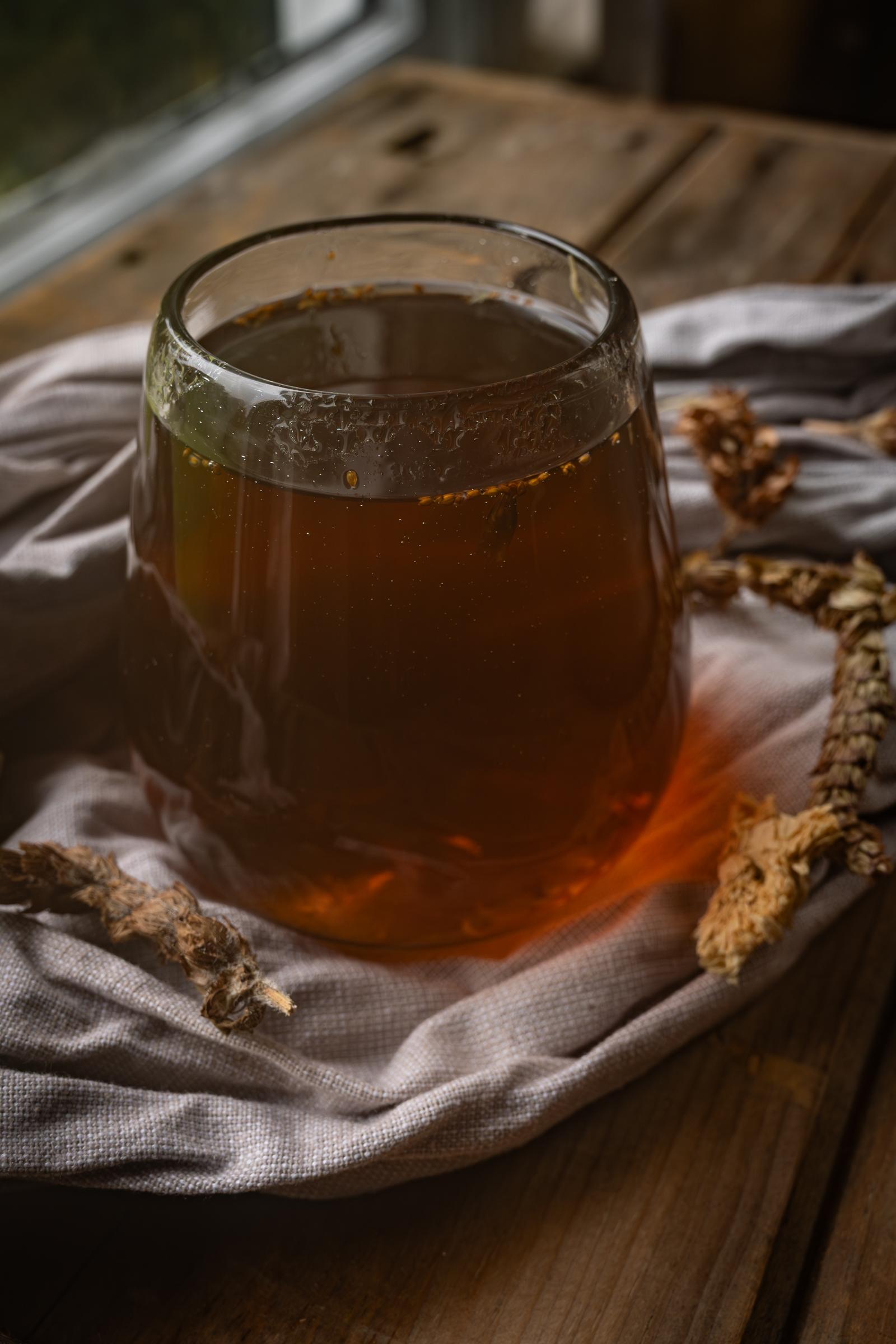
This always does the trick in my household too, I never tried to use the flower before I’ll have to try it out!